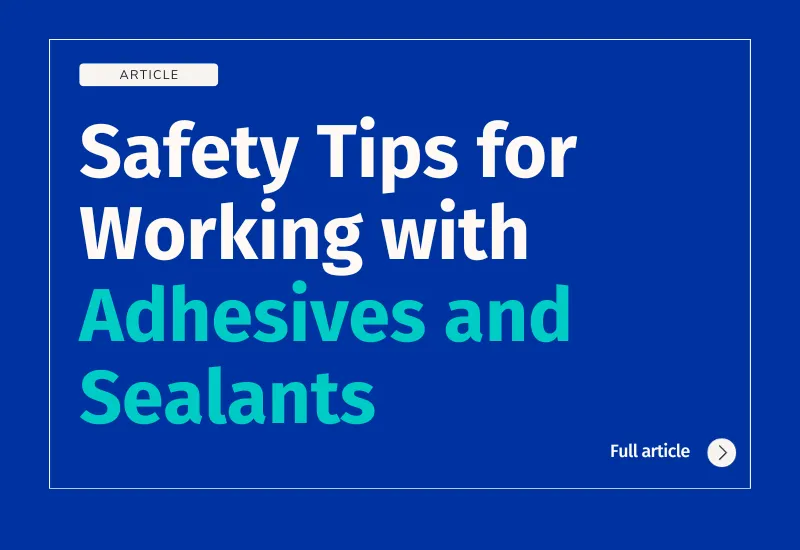Mastering Sealant Residue Removal: Techniques and Tips
Sealant residue is the leftover material that remains after a sealant has been applied and cured. This residue can accumulate over time, becoming discoloured, hardened, or uneven and compromise the effectiveness of new sealant applications. Sealant residue comes in different types, like modified-silane, silicone, acrylic, and polyurethane. Each needs a specific way to remove it. Some sealants come off easily by peeling or scraping, while others need more careful methods to get rid of them completely. Removing old sealant residue can be a challenging task, but with the right techniques and tools, it can be done efficiently and effectively. In this article, we'll explore proven methods for safely removing sealant residue from various surfaces without causing damage.
What are some necessary tools and materials?
· Utility knife or razor blade scraper
· Sealant remover solvent or adhesive remover
· Non-abrasive scrubbing pad or brush
· Clean cloths or rags
· Protective gloves and goggles
Step-by-Step Removal Process:
Assess the Surface: Carefully examine the surface to identify areas of sealant residue buildup and assess the type of material you'll be working with.
Soften the Residue: Apply a sealant remover solvent or adhesive remover to the residue according to the manufacturer's instructions. Allow the solvent to penetrate and soften the residue for several minutes.
Scrape Away Residue: Use a utility knife or razor blade scraper to gently scrape away softened sealant residue. Work slowly and carefully to avoid damaging the surface beneath.
Scrub and Clean: Once most of the residue has been removed, use a non-abrasive scrubbing pad or brush to scrub away any remaining traces of sealant. Apply additional solvent as needed to loosen stubborn residue.
Rinse and Dry: Thoroughly rinse the cleaned area with water to remove any remaining solvent or residue. Use clean cloths or rags to dry the surface completely.
Final Inspection: After the surface has dried, inspect it closely to ensure that all sealant residue has been removed. If necessary, repeat the removal process in areas where residue remains.
What are some necessary precautions?
· Work in a well-ventilated area to minimize exposure to fumes.
· Wear protective gloves and goggles to protect your skin and eyes from contact with solvents.
· Follow the manufacturer's instructions for safe handling and disposal of solvent products.
By following these steps and safety precautions, you can master the art of sealant residue removal, restoring surfaces to their original condition and preparing them for new sealant applications. With patience and persistence, you can remove sealant residue safely and effectively, leaving surfaces clean and ready for resealing or renovation.
06 Mar 2024







